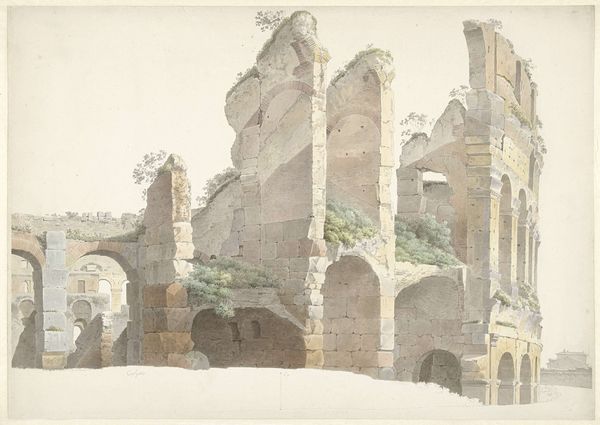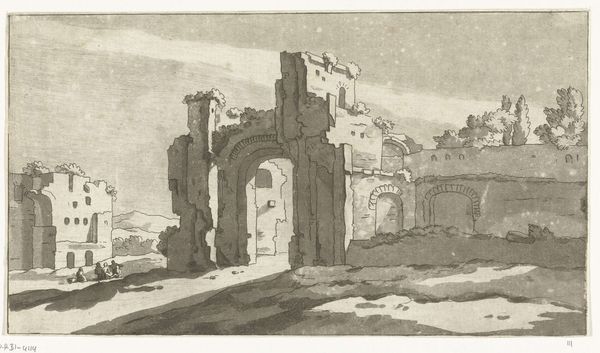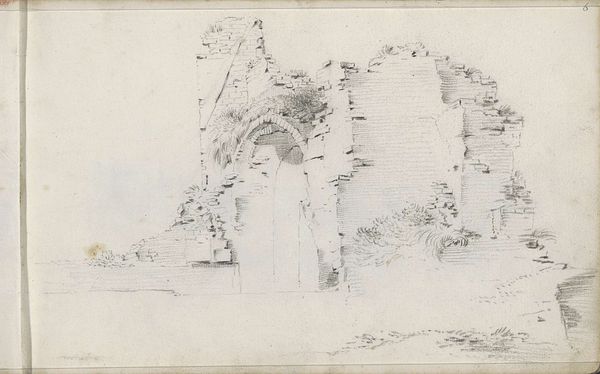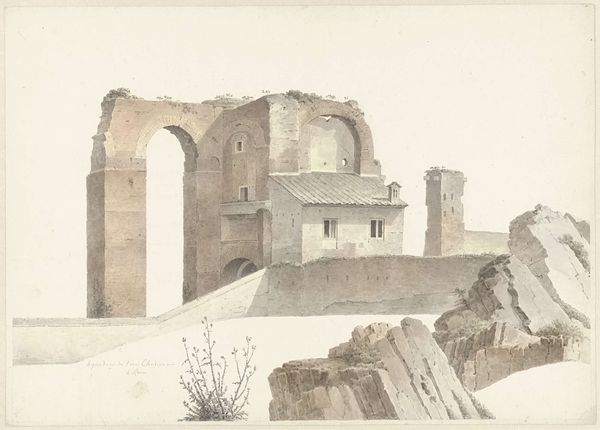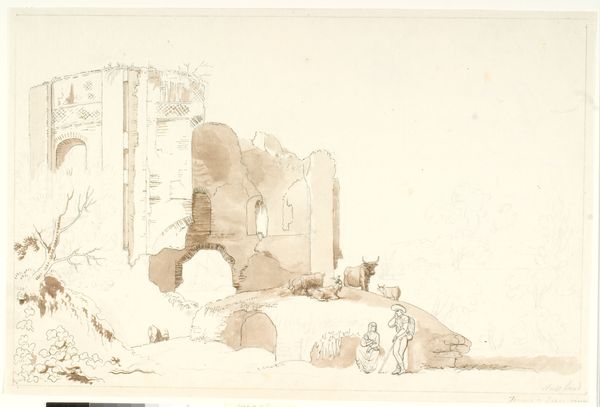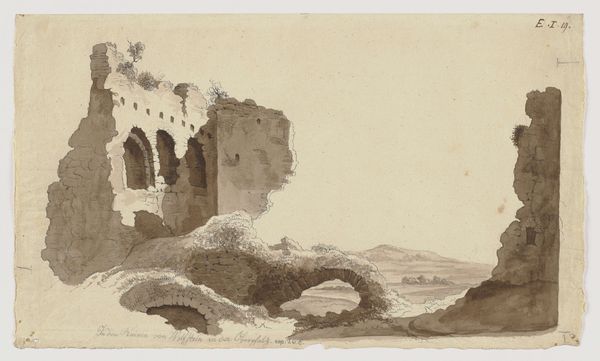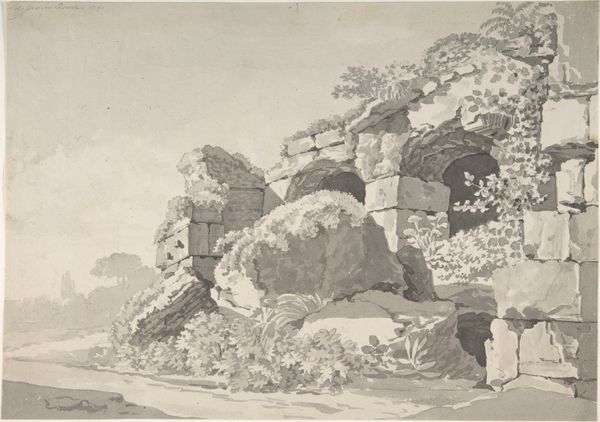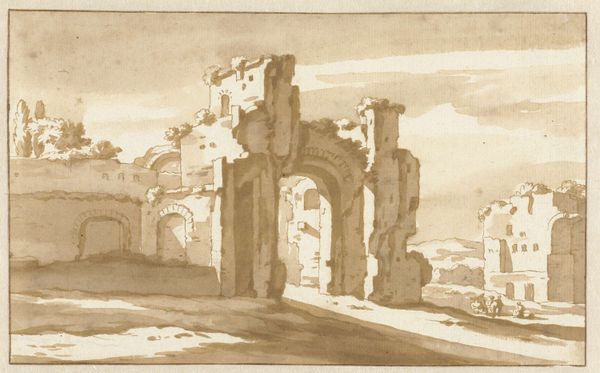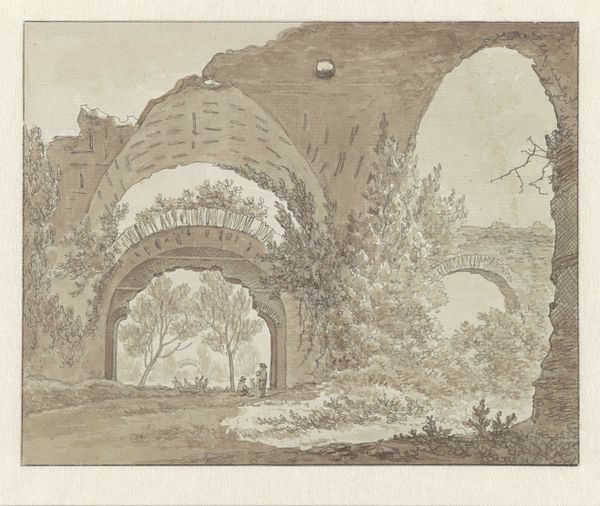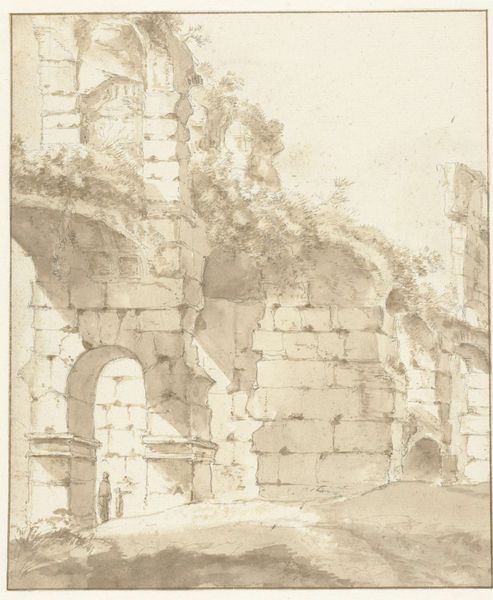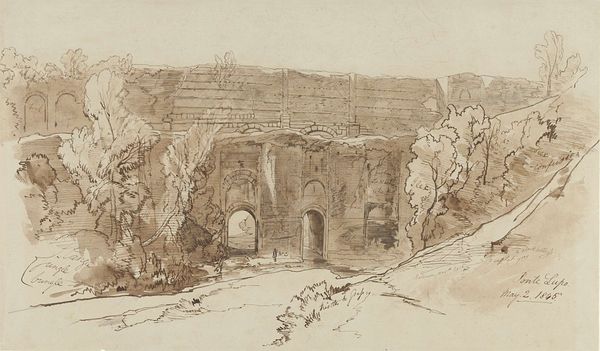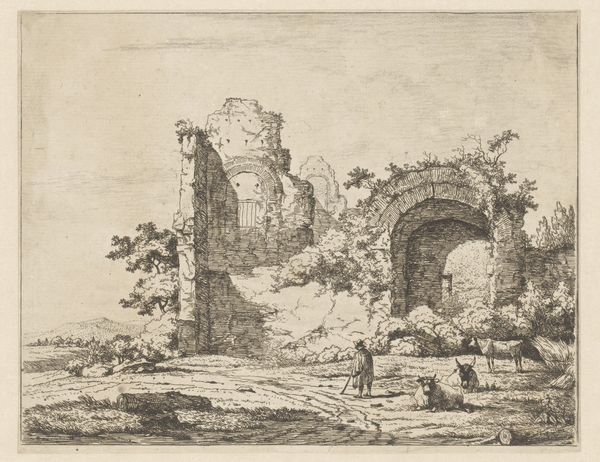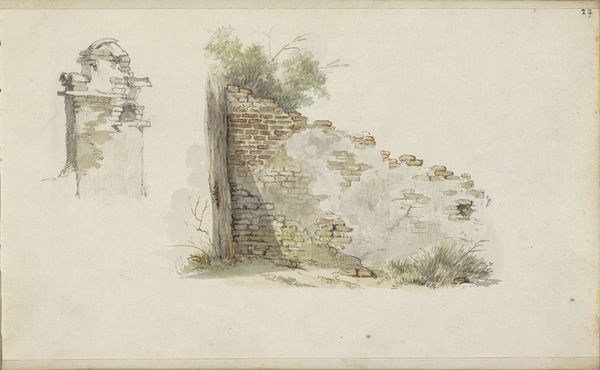
drawing, pencil, architecture
#
drawing
#
pencil sketch
#
landscape
#
romanticism
#
pencil
#
cityscape
#
architecture
#
realism
Dimensions: height 367 mm, width 511 mm
Copyright: Rijks Museum: Open Domain
Curator: Here we have Josephus Augustus Knip's "A Part of an Aqueduct in Rome," a pencil drawing from around 1809 to 1812. Editor: It's fascinating. There's such a stillness about it, a sense of faded grandeur emphasized by the ruinous arches. Curator: Consider the physical presence of Rome during this period. Knip was likely sketching this on location, part of a circuit of artists who treated Italy as a kind of workshop. We see him enacting the labor of realistically recording these immense structures through pencil on paper. The act itself connects him to both classical and contemporary methods of material production. Editor: Absolutely. But the aqueduct itself carries a lot of symbolic weight. Think about the arch. Historically, it’s a symbol of triumph, power, Roman ingenuity. It represents control over nature, literally channeling water and therefore life itself. Now, these arches are crumbling, overtaken by vegetation. What does that imagery convey about the decline of empires, the passage of time, nature's reclaiming of human endeavors? Curator: And yet, there's a very tangible industrial aspect if you closely consider how these structures were built. Think about the transport of the stone, the labor of carving, the sheer engineering. Knip reminds us of the raw, physical effort embedded within what we see as 'classical' beauty. The medium he selected--pencil--highlights that direct physical connection, almost as if mimicking a drawing of an architect's blueprint itself. Editor: I see your point about labor, but can we move away from that for a moment? Note how the remaining sections are composed almost rhythmically—alternating solid pillars and open spaces. It generates a sensation of openness, inviting a meditative contemplation on the enduring—or ephemeral—qualities represented by these shapes. The delicate shading furthers that feeling of meditative calm. Curator: Meditative, maybe. But isn't that meditative quality only possible through the exploitation of quarries and the manual effort of those who built it? Knip doesn't ignore them; instead, he emphasizes the sheer scale that speaks to those very raw aspects. Editor: True, that underlying labor narrative is always present in representations like these. It's an essential element that enhances Knip’s depiction of Rome's layers of historical significance. Curator: Ultimately, it demonstrates that our perception is fundamentally linked to material circumstance. Editor: I think this work is beautiful in that it allows us to observe a conversation about not just process, but what imagery stays with us, across centuries.
Comments
rijksmuseum about 2 years ago
⋮
Knip identified many of the aqueducts he drew as the ‘Aquaduc de Néron’. Nowadays only a small part of the network of ancient Roman water channels that have been preserved is called the Aqua Neronis (Nero’s Aqueduct). Knip here possibly drew a section of the Aqua Julia, between the Caelian Hill and the Palatine Hill.
Join the conversation
Join millions of artists and users on Artera today and experience the ultimate creative platform.
